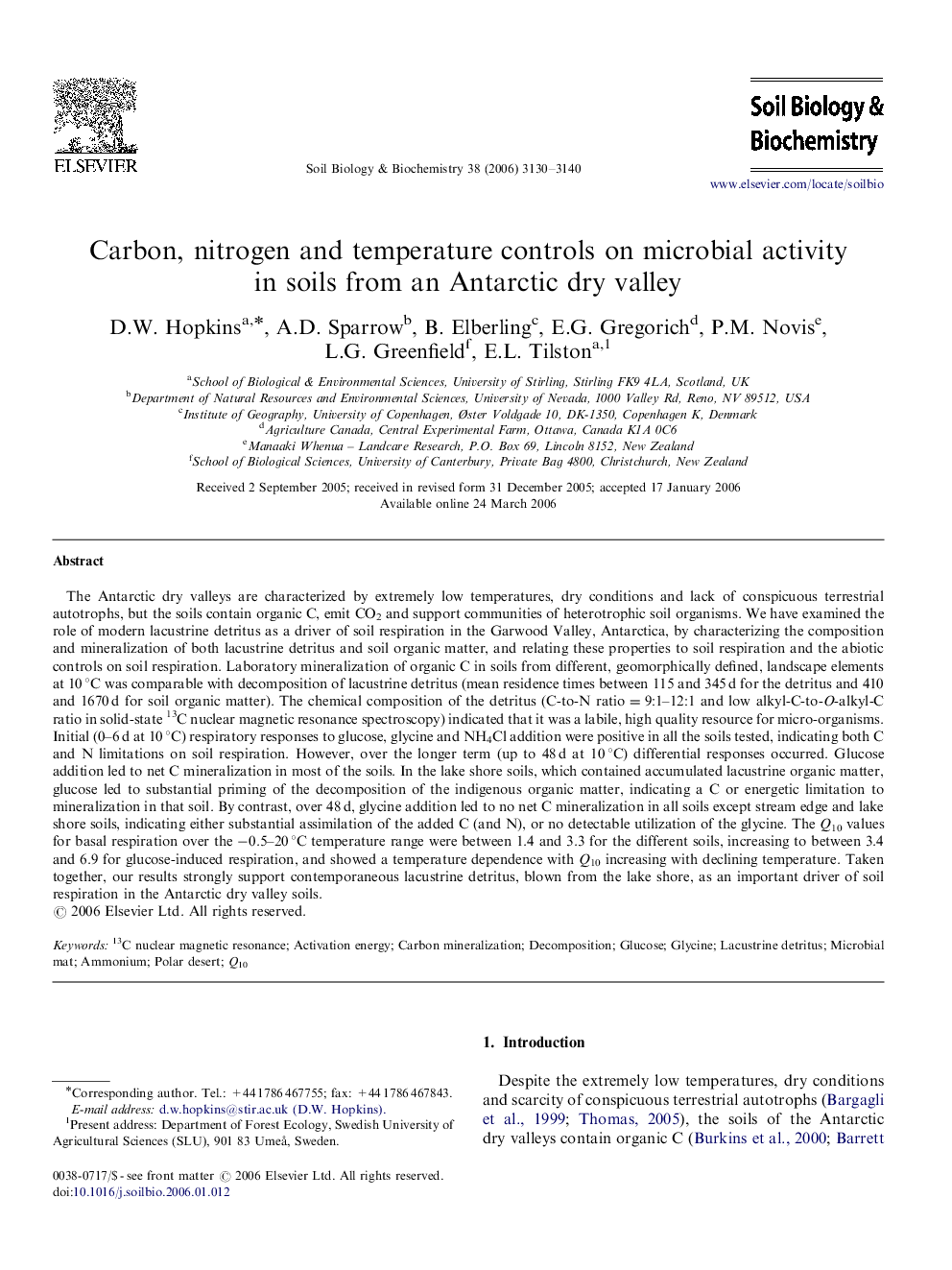| کد مقاله | کد نشریه | سال انتشار | مقاله انگلیسی | نسخه تمام متن |
|---|---|---|---|---|
| 2026169 | 1070021 | 2006 | 11 صفحه PDF | دانلود رایگان |

The Antarctic dry valleys are characterized by extremely low temperatures, dry conditions and lack of conspicuous terrestrial autotrophs, but the soils contain organic C, emit CO2 and support communities of heterotrophic soil organisms. We have examined the role of modern lacustrine detritus as a driver of soil respiration in the Garwood Valley, Antarctica, by characterizing the composition and mineralization of both lacustrine detritus and soil organic matter, and relating these properties to soil respiration and the abiotic controls on soil respiration. Laboratory mineralization of organic C in soils from different, geomorphically defined, landscape elements at 10 °C was comparable with decomposition of lacustrine detritus (mean residence times between 115 and 345 d for the detritus and 410 and 1670 d for soil organic matter). The chemical composition of the detritus (C-to-N ratio=9:1–12:1 and low alkyl-C-to-O-alkyl-C ratio in solid-state 13C nuclear magnetic resonance spectroscopy) indicated that it was a labile, high quality resource for micro-organisms. Initial (0–6 d at 10 °C) respiratory responses to glucose, glycine and NH4Cl addition were positive in all the soils tested, indicating both C and N limitations on soil respiration. However, over the longer term (up to 48 d at 10 °C) differential responses occurred. Glucose addition led to net C mineralization in most of the soils. In the lake shore soils, which contained accumulated lacustrine organic matter, glucose led to substantial priming of the decomposition of the indigenous organic matter, indicating a C or energetic limitation to mineralization in that soil. By contrast, over 48 d, glycine addition led to no net C mineralization in all soils except stream edge and lake shore soils, indicating either substantial assimilation of the added C (and N), or no detectable utilization of the glycine. The Q10 values for basal respiration over the −0.5–20 °C temperature range were between 1.4 and 3.3 for the different soils, increasing to between 3.4 and 6.9 for glucose-induced respiration, and showed a temperature dependence with Q10 increasing with declining temperature. Taken together, our results strongly support contemporaneous lacustrine detritus, blown from the lake shore, as an important driver of soil respiration in the Antarctic dry valley soils.
Journal: Soil Biology and Biochemistry - Volume 38, Issue 10, October 2006, Pages 3130–3140